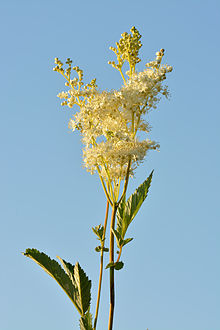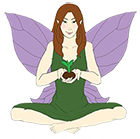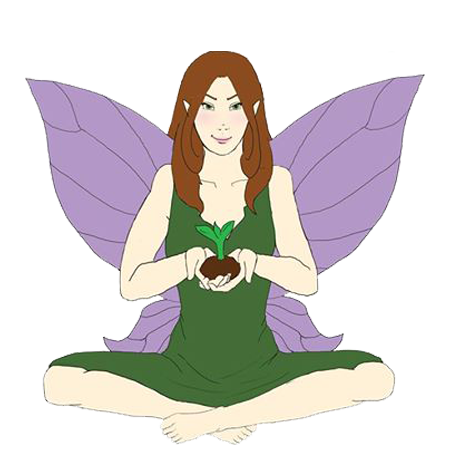Getting to Know Our Poisonous Plant Friends
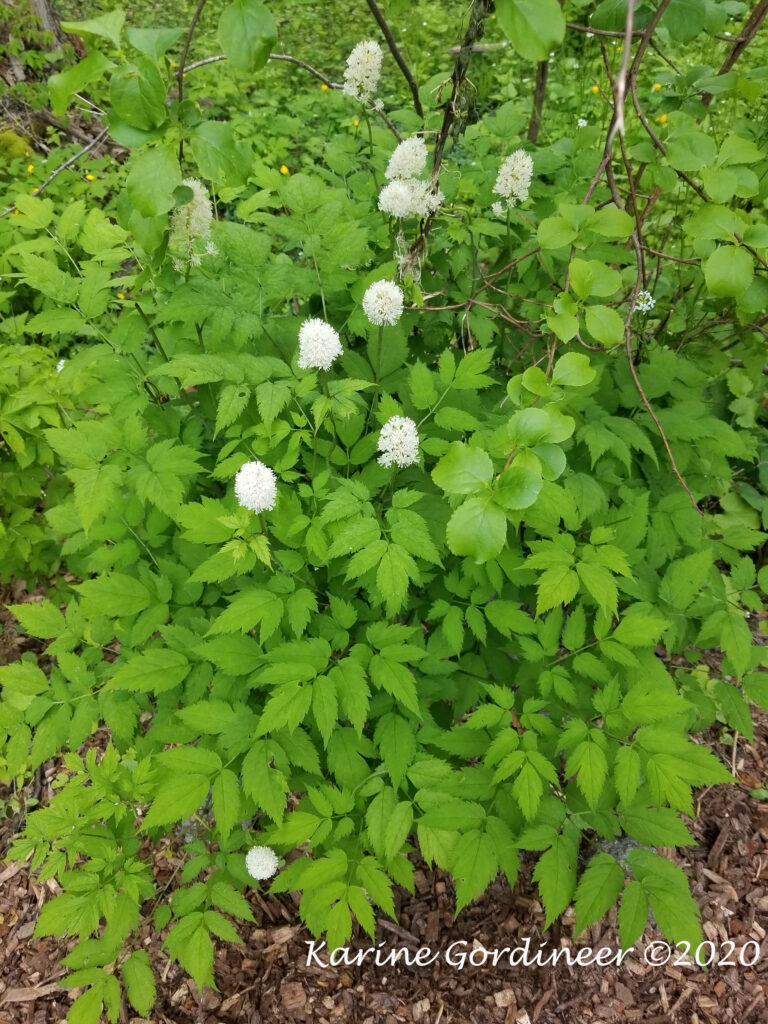
It may seem like a contradiction in terms, “poisonous plant friends”. For how can we be “friends” with a poisonous plant? As I tell my herbal students, it’s even more important to familiarize ourselves with and be able to accurately identify the poisonous plants, than even the medicinal and edible ones. Think about it, if we know the poisonous plants very well, and study them, we can learn to identify them in any season. Not just when they are flowering or fruiting. Making it less likely that we will make a mistake in our plant identifications or when gathering plants from our yards or gardens, as volunteers often show up even in our well-tended plots.
As humans we tend to think only in terms of what the Earth or plants can do specifically for us, but plants provide food, and often shelter for other species on the planet as well. Some plants offer healing to the environment in the form of bioremediation, taking toxins out of the soil, aerating the soil, or even re-mineralizing the soil, drawing up minerals from deep within the Earth, bringing it up to the upper layers, or pulling it from the air and fixing it in the ground.
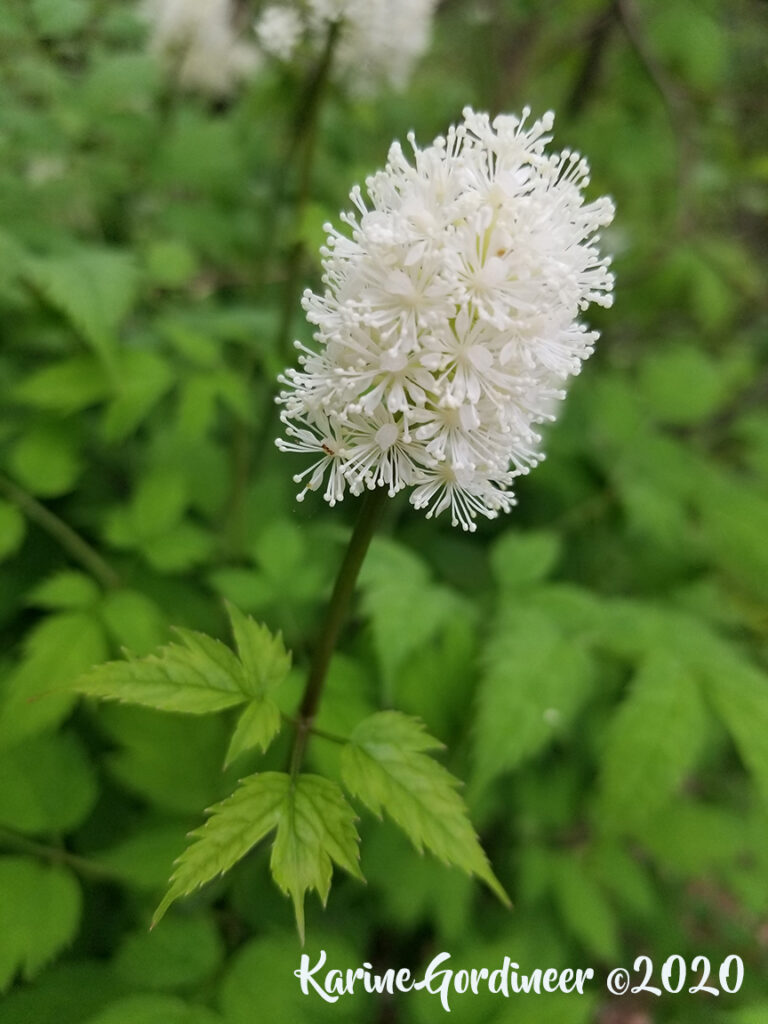
One of my favorite poisonous plants is the White Baneberry (Actaea pachypoda). White Baneberry is a perennial member of the Ranunculaceae or Buttercup Family that grows to heights of 1 to 3 feet with alternate, compound leaves and sharply toothed leaflets. The white, cylindrical, dense flowers bloom in May and June. White Baneberry favors deciduous and mixed forests along the Northeastern range, inland through the Appalachians, and as far west as Minnesota. This captivating beauty has a few other common names one of which is Doll’s Eyes. It’s obvious how she gets this very descriptive name when we see the stark white berries with single black, central dot, a leftover from the flower stigmas. These white spooky and fleshy berries burst full in Autumn and create quite a show on the landscape with their contrasting red fruit stems or pedicels. Although all parts of this plant are poisonous, White-Tailed Deer have been known to graze the leaves and small Mice and Squirrels will eat the berries as will many Bird species.
Although this fascinating plant has been used historically for medicinal purposes by several native tribes, it is in fact very poisonous with as few as 6 berries causing major gastric inflammation, nausea, vomiting, respiratory paralysis, cardiac arrest, and even death! Those souls that did work with this plant medicinally were aware of its lethal potentialities and worked with it very carefully. For clarity purposes, I DO NOT recommend ingesting any part of White Baneberry.
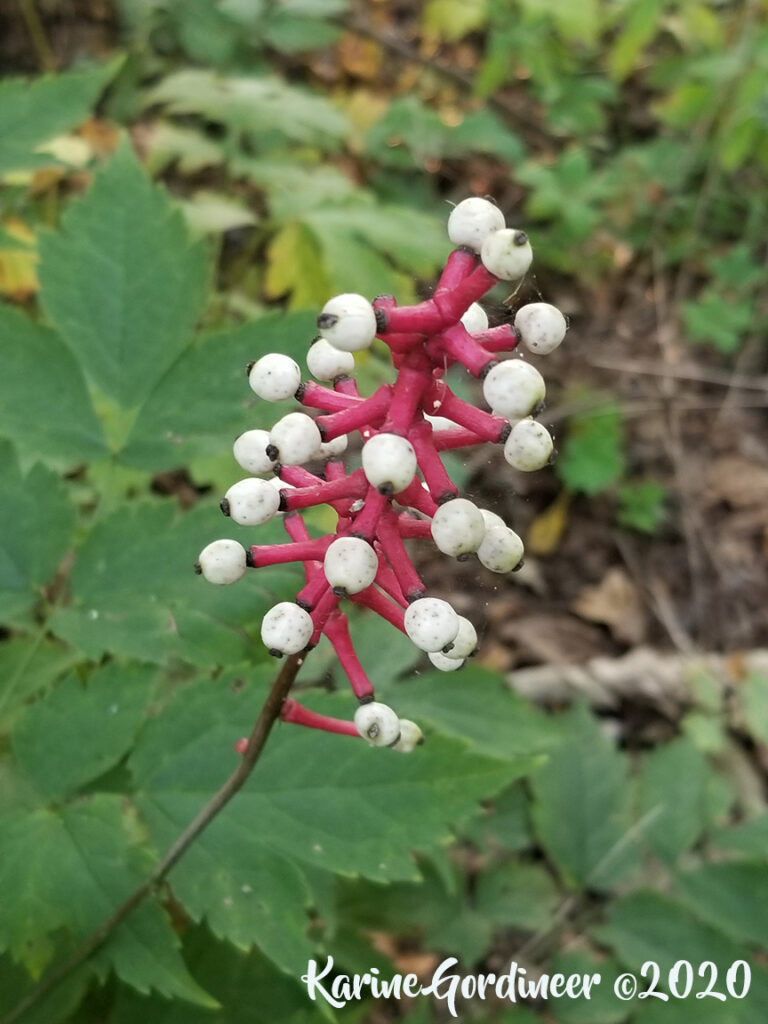
The poisonous plants are great in their Power but need to be approached with appreciation and most of all respect even and especially when we work with them energetically. I spend a considerable amount of time connecting with plants energetically and through the shamanic journey and I have worked with this plant for many years. I have tremendous respect and admiration for Her Beauty and Power and immense gratitude for the connection. Of the many lessons of White Baneberry, She aids us in looking within unflinching in what we find there. She provides a mirror for those who would approach Her reflecting back to us what we present. Because this plant walks hand in hand with Death, She helps us to glimpse beyond the illusions of our physical reality and beyond our own illusions so often overlooked. She is a true partner in shamanic journeying even guiding and assisting us in walking between the worlds. None of this happens in a casual way but only through patience and commitment to developing a relationship with the Spirit of this Plant.
If you would like to learn the Language of the Plants and how to connect with them deeply, be sure to check out upcoming classes in Plant Communication and Shamanic Plant Medicine Journey beginning November 19th.
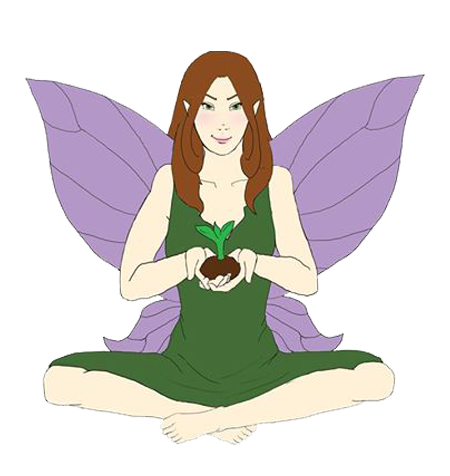
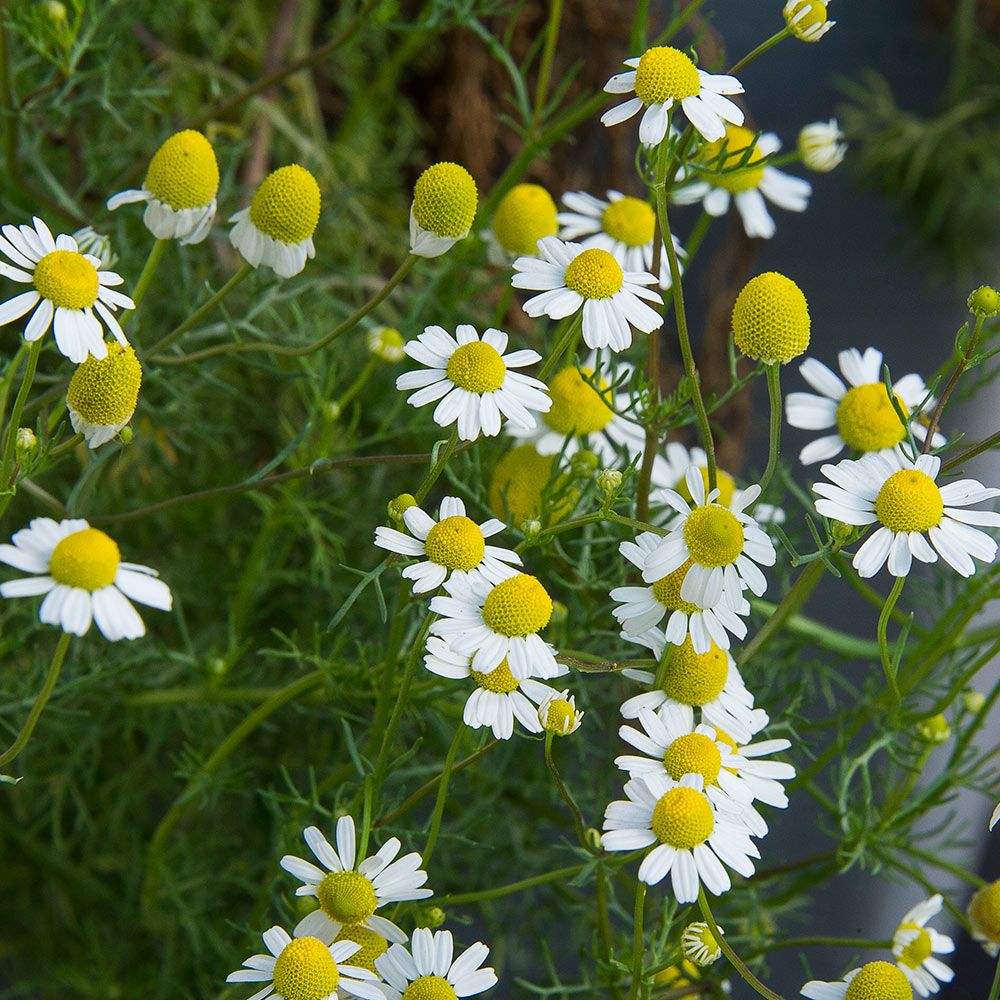

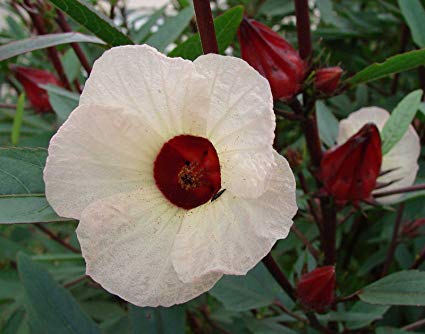

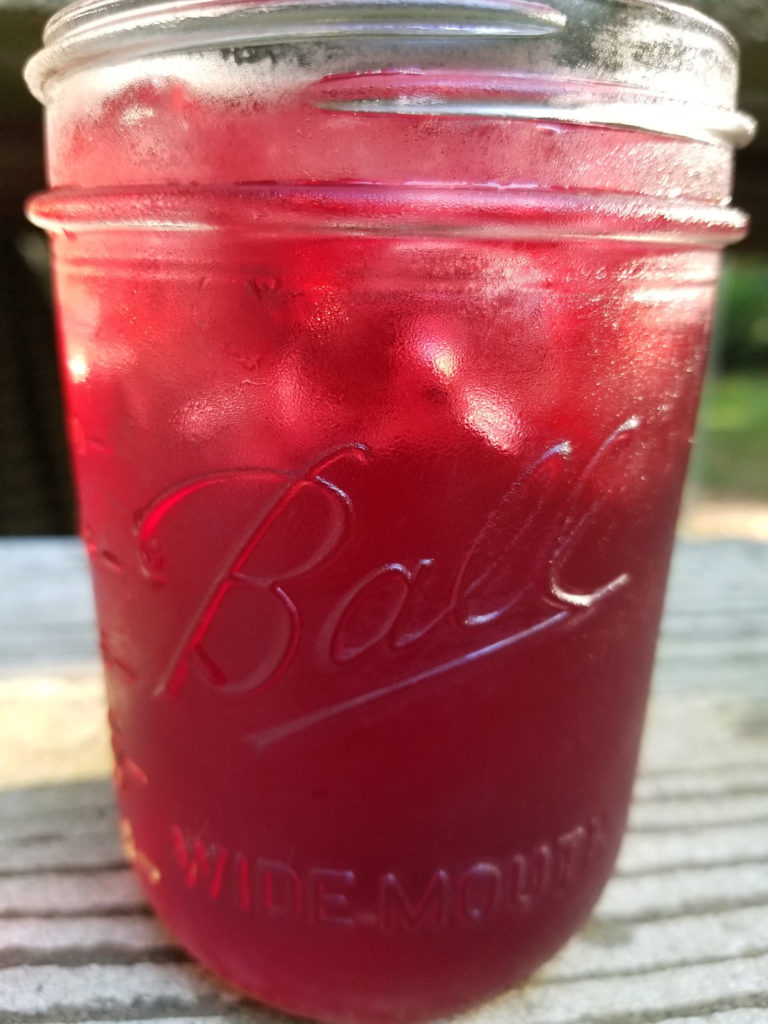
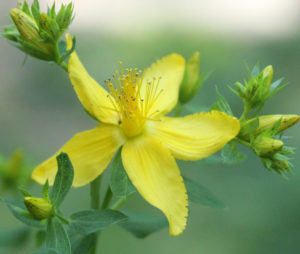 As you’ve probably already guessed from this website, I love plants. Medicinal plants have been a long time focus and calling although all plants are healing in their own wonderful and varied ways. This blog post has been a very long time coming. Its first stirrings began many years ago and came again while harvesting St. John’s Wort (Hypericum perforatum) flowers in the bright, warm, embracing sun in the summer of 2015. It had been a trying year full of unexpected changes as my mother had died suddenly in the very early and sleepy spring. Anyone that has experienced grief especially the raw grief that comes on abruptly unexpectedly leaving you breathless in an instant as all the oxygen in your universe is viciously sucked away in one soundless swoosh. My experience certainly didn’t pale in that regard. It left me feeling as tiny as a fish flopping around outside of its safe, natural borders into unchartered, foreign, and wholly un-supporting terrain.
As you’ve probably already guessed from this website, I love plants. Medicinal plants have been a long time focus and calling although all plants are healing in their own wonderful and varied ways. This blog post has been a very long time coming. Its first stirrings began many years ago and came again while harvesting St. John’s Wort (Hypericum perforatum) flowers in the bright, warm, embracing sun in the summer of 2015. It had been a trying year full of unexpected changes as my mother had died suddenly in the very early and sleepy spring. Anyone that has experienced grief especially the raw grief that comes on abruptly unexpectedly leaving you breathless in an instant as all the oxygen in your universe is viciously sucked away in one soundless swoosh. My experience certainly didn’t pale in that regard. It left me feeling as tiny as a fish flopping around outside of its safe, natural borders into unchartered, foreign, and wholly un-supporting terrain.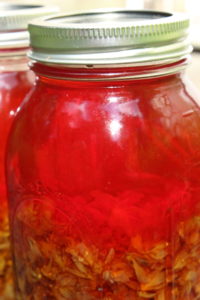 the plants, playing my flute, and harvesting the plant’s gifts. I especially found myself spending much time with St. John’s Wort, or St. Joan’s Wort as she prefers. On this particular day I was harvesting St. Joan’s Wort in the baking Sun to be made into a healing oil. It’s one of my favorite things to do. She has been one of my plant allies for several decades. Early on She drove away “seasonal blues” and calmed sciatica pain and sore muscles. Over the years I’ve had the privilege of sharing her medicine with so many people through classes and remedies from her bright yellow flowers that turn red when bruised or steeped in oil. Making St. Joan’s Wort oil and salve has become a catharsis for me, a rite of passage, and just one of the ways that I keep reconnecting with Her power year after year. The year my mother passed I found myself drawn to her over and over again. A strong drawing not out of balance but a gentle knowing that She was there waiting for me daily. I would seek Her out making flower essences, oils, solar infusions, and many times solely for the purpose of being in Her energy. This particular afternoon had been one of those moments that should be frozen for eternity the connection is so complete and profound that a timelessness drifts over like a summer breeze a completely welcoming surprise. As I bent to examine the bursting yellow blossoms it suddenly occurred to me that I was healing. I was working through the feelings surrounding my mother’s death one day at a time with the help of this absolutely amazing and powerful plant. I’d noticed over the months, that my energy and vitality were returning. At times I was even laughing and the deep and heavy sadness was lifting. In this beautiful, profound “ah ha” moment that burned deep in my soul I realized on an even deeper level that THIS is my medicine. This. All of it. Being in relationship with the plants, connecting, being on the Earth, harvesting in the way my ancestors have done for thousands of years. Simple, beautiful, and profound. This. This was my “medicine”, my power. I’ve been teaching about medicinal herbs and doing healing work for well over 30 years and yet there is always room to stretch farther, to go deeper.
the plants, playing my flute, and harvesting the plant’s gifts. I especially found myself spending much time with St. John’s Wort, or St. Joan’s Wort as she prefers. On this particular day I was harvesting St. Joan’s Wort in the baking Sun to be made into a healing oil. It’s one of my favorite things to do. She has been one of my plant allies for several decades. Early on She drove away “seasonal blues” and calmed sciatica pain and sore muscles. Over the years I’ve had the privilege of sharing her medicine with so many people through classes and remedies from her bright yellow flowers that turn red when bruised or steeped in oil. Making St. Joan’s Wort oil and salve has become a catharsis for me, a rite of passage, and just one of the ways that I keep reconnecting with Her power year after year. The year my mother passed I found myself drawn to her over and over again. A strong drawing not out of balance but a gentle knowing that She was there waiting for me daily. I would seek Her out making flower essences, oils, solar infusions, and many times solely for the purpose of being in Her energy. This particular afternoon had been one of those moments that should be frozen for eternity the connection is so complete and profound that a timelessness drifts over like a summer breeze a completely welcoming surprise. As I bent to examine the bursting yellow blossoms it suddenly occurred to me that I was healing. I was working through the feelings surrounding my mother’s death one day at a time with the help of this absolutely amazing and powerful plant. I’d noticed over the months, that my energy and vitality were returning. At times I was even laughing and the deep and heavy sadness was lifting. In this beautiful, profound “ah ha” moment that burned deep in my soul I realized on an even deeper level that THIS is my medicine. This. All of it. Being in relationship with the plants, connecting, being on the Earth, harvesting in the way my ancestors have done for thousands of years. Simple, beautiful, and profound. This. This was my “medicine”, my power. I’ve been teaching about medicinal herbs and doing healing work for well over 30 years and yet there is always room to stretch farther, to go deeper. 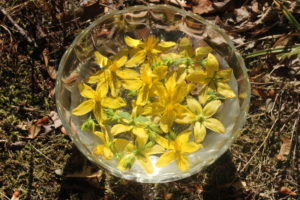 Even now I can feel Her roots working their way into my soul, into my Being. And I smile. This is the nature of the sacred medicine plants when we approach them with love, with gratitude, devoid of ego, and with an open heart. Bringing our whole selves with us; broken, bruised, and wounded. Or happy and joyous. It doesn’t matter. They react and relate to the authentic. To the real. To the childlike. To humility. To me it requires a complete giving over of the self and allowing oneself to be led. To be guided. Allowing yourself to “not know”. Letting it be okay to not have all the answers. That is where we become teachable. It is the place where the everyday and the sacred collide stretching on into eternity. This is where we embrace the Divine and in doing so we touch the sacred within ourselves. This is the place where we truly connect with the sacred medicine plants.
Even now I can feel Her roots working their way into my soul, into my Being. And I smile. This is the nature of the sacred medicine plants when we approach them with love, with gratitude, devoid of ego, and with an open heart. Bringing our whole selves with us; broken, bruised, and wounded. Or happy and joyous. It doesn’t matter. They react and relate to the authentic. To the real. To the childlike. To humility. To me it requires a complete giving over of the self and allowing oneself to be led. To be guided. Allowing yourself to “not know”. Letting it be okay to not have all the answers. That is where we become teachable. It is the place where the everyday and the sacred collide stretching on into eternity. This is where we embrace the Divine and in doing so we touch the sacred within ourselves. This is the place where we truly connect with the sacred medicine plants.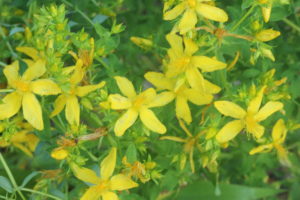
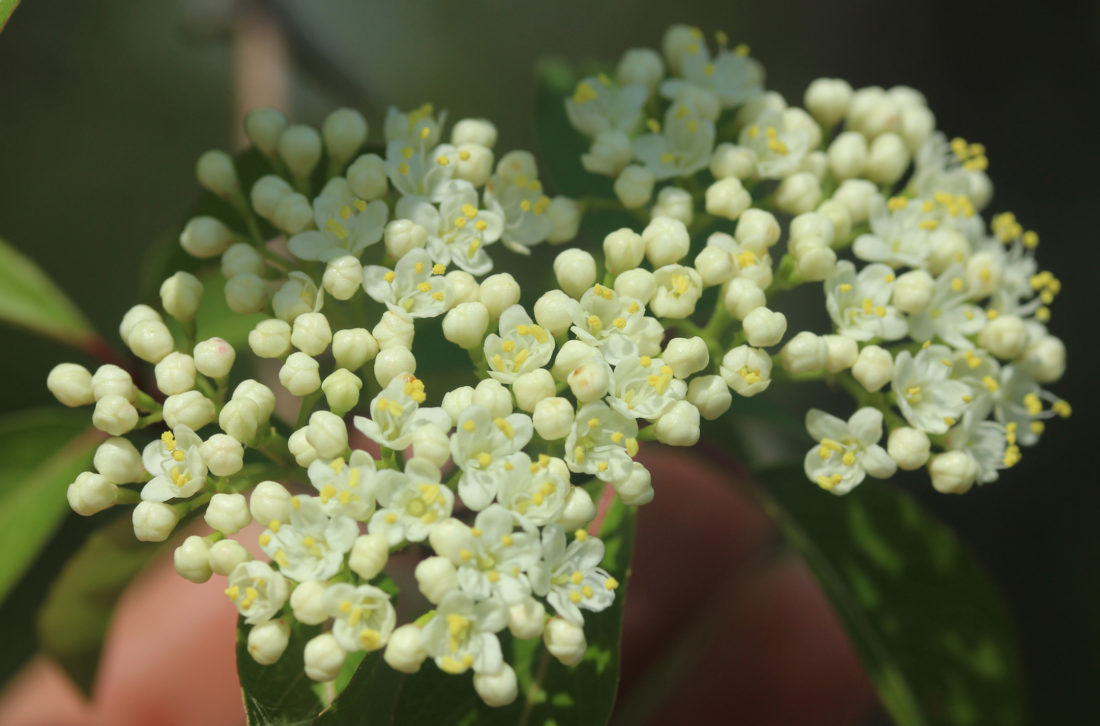
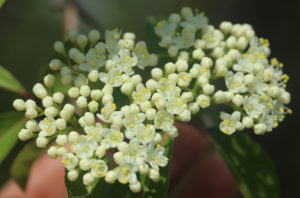 Every August I watch in anticipation for the deep purple berries of the Elder Tree. It’s technically not a tree at all but a tall growing shrub reaching heights of up to 12 feet. My obsession begins early in the summer at the end of June when the effusive flush of the fragrant inflorescence form into panicles of creamy white. Remarkably beautiful are the flowers that I can’t bear to harvest them plus I love the berries too much! These white blossoms have a special magic and medicine all their own, often being made into flavorful concoctions such as Elder Wine or Elder Flower Cordials, or into foods such as Elder Flower Fritters. Their medicinal uses are impressive as well for they are considered diaphoretic and carminative in nature and useful as teas to help resolve colds and flus quickly often reducing their duration by several days. Recent studies also suggest that Elder flowers have anticancer benefits and may help to support eye health.
Every August I watch in anticipation for the deep purple berries of the Elder Tree. It’s technically not a tree at all but a tall growing shrub reaching heights of up to 12 feet. My obsession begins early in the summer at the end of June when the effusive flush of the fragrant inflorescence form into panicles of creamy white. Remarkably beautiful are the flowers that I can’t bear to harvest them plus I love the berries too much! These white blossoms have a special magic and medicine all their own, often being made into flavorful concoctions such as Elder Wine or Elder Flower Cordials, or into foods such as Elder Flower Fritters. Their medicinal uses are impressive as well for they are considered diaphoretic and carminative in nature and useful as teas to help resolve colds and flus quickly often reducing their duration by several days. Recent studies also suggest that Elder flowers have anticancer benefits and may help to support eye health.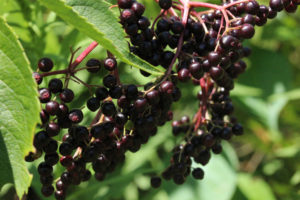 leave enough for my wild friends. Infinitely delicious are the berries, that they have been used in cooking pies and jams for centuries not to mention Elderberry Wine and jelly! Elderberries have impressive antiviral properties that are equal to or greater than modern vaccines without the side effects. Elderberry Syrup can be taken throughout flu and cold season as a highly effective preventative remedy and it’s delicious too! I take the Elderberry Syrup all season as it keeps me from getting ill and I feel great from all the antioxidants contained within. High in anthocyanins, Elderberries are a wonderful tonic for the heart and for supporting healthy eyes as do many of the darker berries such as Bilberry which were used in WWII by British fighter pilots to improve their night vision. Likewise, Elderberries may provide support for those with type 2 diabetes.
leave enough for my wild friends. Infinitely delicious are the berries, that they have been used in cooking pies and jams for centuries not to mention Elderberry Wine and jelly! Elderberries have impressive antiviral properties that are equal to or greater than modern vaccines without the side effects. Elderberry Syrup can be taken throughout flu and cold season as a highly effective preventative remedy and it’s delicious too! I take the Elderberry Syrup all season as it keeps me from getting ill and I feel great from all the antioxidants contained within. High in anthocyanins, Elderberries are a wonderful tonic for the heart and for supporting healthy eyes as do many of the darker berries such as Bilberry which were used in WWII by British fighter pilots to improve their night vision. Likewise, Elderberries may provide support for those with type 2 diabetes.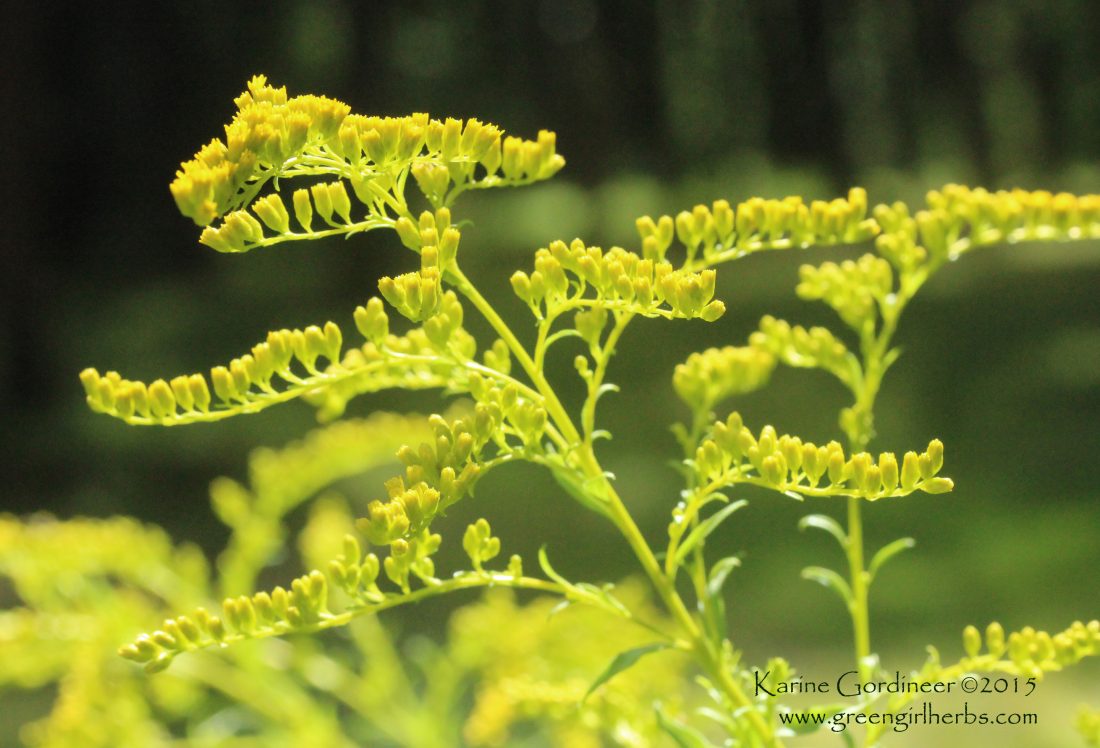
 Many Native American tribes utilized the Goldenrod plant for a variety of ills including the Iroquois who employed infusions of the roots and flowers for pain. The Potawatomi made a tea from the blossoms to bring down fevers. Other tribes used the plant topically to treat snakebite, and the root for burns. Indeed, Goldenrod is rich with medicinal healing powers and with its astringent qualities can be used to quell fall allergic reactions as well as cold and flu upper respiratory mucus and fevers. Goldenrod can be taken to help tune our immune systems for winter and as nature is so wise, she has arranged that Goldenrod is available for us just in time. Goldenrod is a friend to the urinary system and healing to the kidneys, coming to the aid of those suffering with urinary gravel or stones, and frequent urination. A tea can also be taken to prevent gravel, kidney stones, nephritis, and issues of the prostate. Goldenrod is an effective digestive and possesses anti-inflammatory qualities. As a cleansing herb, it is helpful in the treatment of arthritis. Goldenrod can be used as a tea or tincture and the seeds are an edible trailfood. All Goldenrods are safe to use and many can be used interchangeably.
Many Native American tribes utilized the Goldenrod plant for a variety of ills including the Iroquois who employed infusions of the roots and flowers for pain. The Potawatomi made a tea from the blossoms to bring down fevers. Other tribes used the plant topically to treat snakebite, and the root for burns. Indeed, Goldenrod is rich with medicinal healing powers and with its astringent qualities can be used to quell fall allergic reactions as well as cold and flu upper respiratory mucus and fevers. Goldenrod can be taken to help tune our immune systems for winter and as nature is so wise, she has arranged that Goldenrod is available for us just in time. Goldenrod is a friend to the urinary system and healing to the kidneys, coming to the aid of those suffering with urinary gravel or stones, and frequent urination. A tea can also be taken to prevent gravel, kidney stones, nephritis, and issues of the prostate. Goldenrod is an effective digestive and possesses anti-inflammatory qualities. As a cleansing herb, it is helpful in the treatment of arthritis. Goldenrod can be used as a tea or tincture and the seeds are an edible trailfood. All Goldenrods are safe to use and many can be used interchangeably.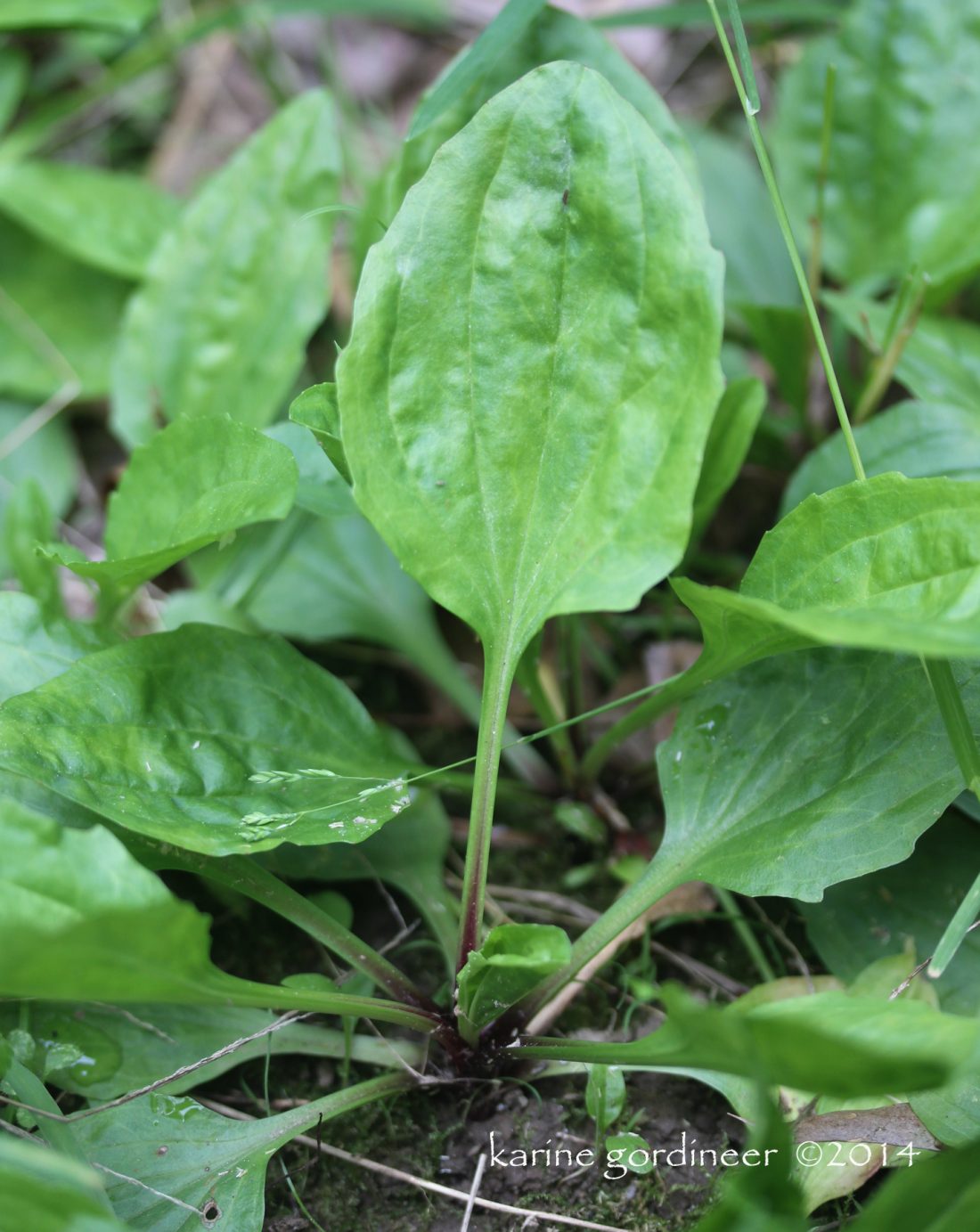
 If people knew that the cures for many of their ills were growing right in their own backyards, I’d like to think they would put down the glyphosate, the lawn mower, the “weed wacker”, and let it grow!
If people knew that the cures for many of their ills were growing right in their own backyards, I’d like to think they would put down the glyphosate, the lawn mower, the “weed wacker”, and let it grow! tain shines as a highly valued medicinal. Historically it has been used as a folk cancer remedy and is still used today in Latin America for this purpose. Its demulcent properties are soothing to the entire intestinal tract and are used to heal ulcers, indigestion, and IBS. The common constipation remedy psyllium comes from another species of Plantain, Plantago psyllium. Plantain is soothing, in fact, to all mucous membranes including throats, and lungs making it effective during colds and sore throats.
tain shines as a highly valued medicinal. Historically it has been used as a folk cancer remedy and is still used today in Latin America for this purpose. Its demulcent properties are soothing to the entire intestinal tract and are used to heal ulcers, indigestion, and IBS. The common constipation remedy psyllium comes from another species of Plantain, Plantago psyllium. Plantain is soothing, in fact, to all mucous membranes including throats, and lungs making it effective during colds and sore throats.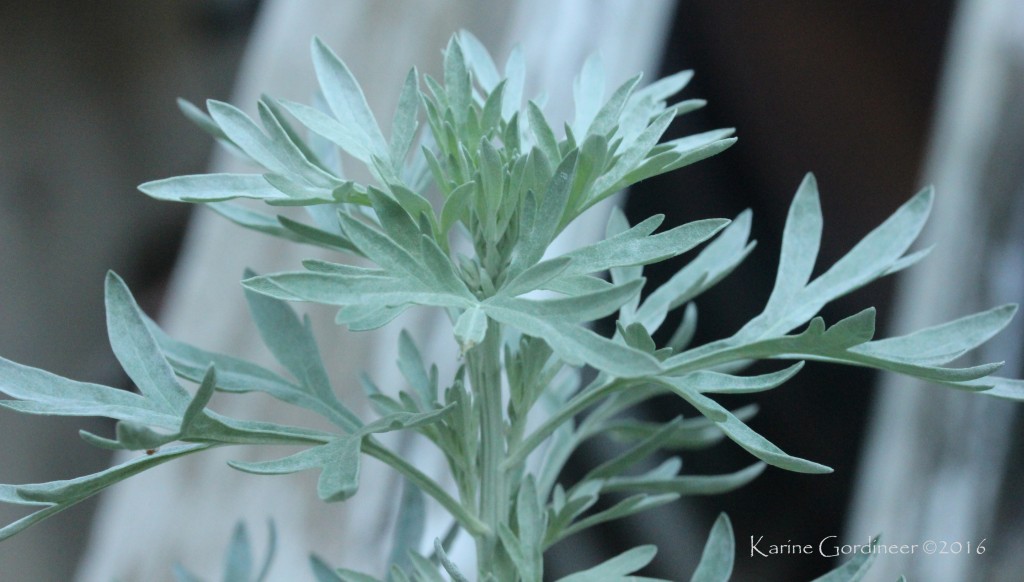
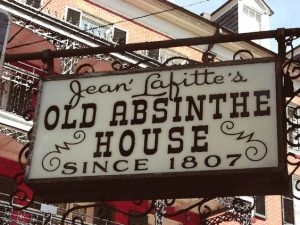 Artemisia absinthium. Yes, that Artemisia. The “green fairy”, the once outlawed absinthe said to have driven scores of Parisians insane, rumored to cause tuberculosis, epilepsy, and even blamed for Van Gogh’s insanity. Not to ruin a good scandal but Wormwood’s bad boy reputation is completely overblown. The thujone in Wormwood that gives it its hallucinogenic properties, is also a neurotoxin in high doses, causing seizures and eventually death. The thujone is most high in the concentrated Wormwood oil. Thujone levels in Wormwood oil are around 40% and even small amounts of the oil can cause irreversible damage. Thujone levels in Absinthe were a mere .003% not likely to cause a problem. What is more than likely to blame for their debaucherously driven behavior would be Absinthe’s 70-80% alcohol content as Wormwood is only one of a number of herbs concocted in the famous potion. Although Absinthe originated in Switzerland in the late 18th century, it grew in popularity initially with French soldiers in the 1840’s who had been given the drink to cure malaria for which Wormwood is a traditional remedy. Making its way to America, Absinthe found a permanent home in New Orleans where it is still a featured spirit today at such notable establishments as The Old Absinthe House. Prior to that time, Wormwood had been used medicinally as far back as Egyptian times and is named in the Ebers Papyrus, an ancient medical text that is over 3,500 years old. At around the same time, China was also using Wormwood infused medicinal wines. Wormwood is said to have been a favored herb of Artemis who gifted it to Chiron, “Healer of the Gods”, whereby Wormwood became one of his most important healing herbs.
Artemisia absinthium. Yes, that Artemisia. The “green fairy”, the once outlawed absinthe said to have driven scores of Parisians insane, rumored to cause tuberculosis, epilepsy, and even blamed for Van Gogh’s insanity. Not to ruin a good scandal but Wormwood’s bad boy reputation is completely overblown. The thujone in Wormwood that gives it its hallucinogenic properties, is also a neurotoxin in high doses, causing seizures and eventually death. The thujone is most high in the concentrated Wormwood oil. Thujone levels in Wormwood oil are around 40% and even small amounts of the oil can cause irreversible damage. Thujone levels in Absinthe were a mere .003% not likely to cause a problem. What is more than likely to blame for their debaucherously driven behavior would be Absinthe’s 70-80% alcohol content as Wormwood is only one of a number of herbs concocted in the famous potion. Although Absinthe originated in Switzerland in the late 18th century, it grew in popularity initially with French soldiers in the 1840’s who had been given the drink to cure malaria for which Wormwood is a traditional remedy. Making its way to America, Absinthe found a permanent home in New Orleans where it is still a featured spirit today at such notable establishments as The Old Absinthe House. Prior to that time, Wormwood had been used medicinally as far back as Egyptian times and is named in the Ebers Papyrus, an ancient medical text that is over 3,500 years old. At around the same time, China was also using Wormwood infused medicinal wines. Wormwood is said to have been a favored herb of Artemis who gifted it to Chiron, “Healer of the Gods”, whereby Wormwood became one of his most important healing herbs.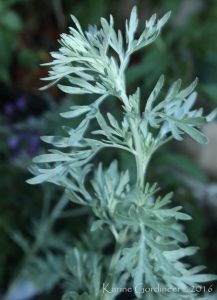 Back to my obsession. I fall in love with plants for a variety of reasons. Sometimes simply because they exist. I could lose hours in Wormwood’s foliage so irresistible is her silver, feathery leaf. The form so similar to other Artemisia’s, certainly one of my favorite plant genus. For all her power as a medicinal, and an enchantment, Wormwood’s leaf formation divulges a certain softness. Perhaps this she bestows along with her protection on those who appreciate and love her. Her history as a protective herb is a long and varied one but her capacity as a healer is most impressive. One of the most bitter of plants, Wormwood has been utilized as a digestive bitter and a tonic for all ailments of the stomach and digestion. Her effect on the liver is notable as she is said to cure jaundice, hepatitis, and mythologically as an antidote for Hemlock poisoning. Like her sister, Mugwort, she is a diaphoretic and will help to bring down a nasty fever. As another of Artemis’s herbs, she has a history as a women’s herb and considered an emmenagogue. She is a competent pain reliever and will bring much needed rest. Most impressive are her abilities as an anti-parasitic. So much so that she is often found to be more effective than modern antimalarial drugs. Such as it is with plants. They can go where pharmaceuticals can’t. Such is their magic. I don’t find magic and medicine to be in opposition to one another. In fact, I don’t believe you can have true healing without magic and wonder and Wormwood brings that in abundance.
Back to my obsession. I fall in love with plants for a variety of reasons. Sometimes simply because they exist. I could lose hours in Wormwood’s foliage so irresistible is her silver, feathery leaf. The form so similar to other Artemisia’s, certainly one of my favorite plant genus. For all her power as a medicinal, and an enchantment, Wormwood’s leaf formation divulges a certain softness. Perhaps this she bestows along with her protection on those who appreciate and love her. Her history as a protective herb is a long and varied one but her capacity as a healer is most impressive. One of the most bitter of plants, Wormwood has been utilized as a digestive bitter and a tonic for all ailments of the stomach and digestion. Her effect on the liver is notable as she is said to cure jaundice, hepatitis, and mythologically as an antidote for Hemlock poisoning. Like her sister, Mugwort, she is a diaphoretic and will help to bring down a nasty fever. As another of Artemis’s herbs, she has a history as a women’s herb and considered an emmenagogue. She is a competent pain reliever and will bring much needed rest. Most impressive are her abilities as an anti-parasitic. So much so that she is often found to be more effective than modern antimalarial drugs. Such as it is with plants. They can go where pharmaceuticals can’t. Such is their magic. I don’t find magic and medicine to be in opposition to one another. In fact, I don’t believe you can have true healing without magic and wonder and Wormwood brings that in abundance. I owe a lot to my parents. They both were a very integral part of the person I grew and continue to grow into, each in their own ways. Even though neither one of them are alive today, their presence is with me always. I often think of the gifts they gave me, the lessons they taught.
I owe a lot to my parents. They both were a very integral part of the person I grew and continue to grow into, each in their own ways. Even though neither one of them are alive today, their presence is with me always. I often think of the gifts they gave me, the lessons they taught. I’d like to think I had a pretty good view of my dad and who he was at different points in his life. Although I wasn’t incarnate prior to the 26 years of his life before I was born, in a very real way I knew him then too. In a person’s DNA is truly everything about them well beyond eye and hair color. Their likes and dislikes, their hopes and dreams, and every experience they’ve ever had, all coded into serpent-like genetic blueprints. So for the record, I think I know him better than anyone.
I’d like to think I had a pretty good view of my dad and who he was at different points in his life. Although I wasn’t incarnate prior to the 26 years of his life before I was born, in a very real way I knew him then too. In a person’s DNA is truly everything about them well beyond eye and hair color. Their likes and dislikes, their hopes and dreams, and every experience they’ve ever had, all coded into serpent-like genetic blueprints. So for the record, I think I know him better than anyone.
